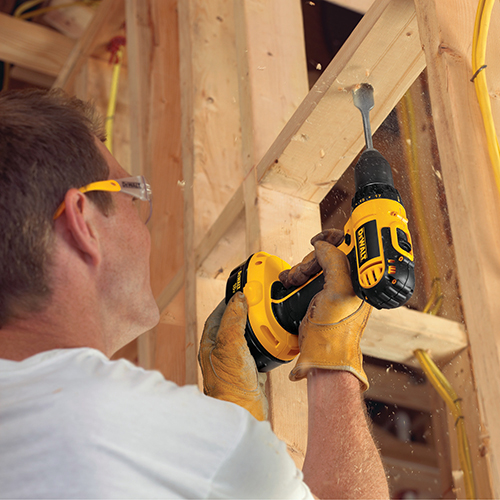Currently shopping at Natchez
Cordless Drill Buying Guide
How do you choose a new cordless drill? Are you brand loyal? Do you choose by price? Maybe you only go for who has the most power? Well, all of these criteria are valid to some extent, but if you're not doing the research, you're probably short changing yourself somewhere.
The first thing to think about when you are in the market for a cordless drill is what are you going to use it for.
If you said, "Drilling, duh", you would be absolutely correct...but not entirely accurate.
Are you working on a jobsite? A hobbyist? Or do you just need a drill/driver around the house? You need to do the research if you want the right fit.
Let's look into the levels of cordless drill you might need.
PRO CORDLESS :
These drills are usually much larger and heavier due to the size of the batteries and motors. A Pro Cordless Drill has a lot of power. Enough power to drive large fasteners and drill through thicker boards with ease. They have ½ inch chucks that can accommodate any type of bit. Pro drills will often have a clutch built into the chuck that allows you to adjust the amount of torque used on a given job. If the drill encounters too much resistance the clutch will disengage and save you from stripping a screw or rounding a bolt. Battery packs run from 18V to 24V and provide strong, long lasting charge. Brushless motors (which are a regular feature of most pro drills) wear better, put out greater torque and require less maintenance. You may still find a pistol style grip here and there, but the T-style that most pro drills have now allows you to get into tighter spaces without busting your knuckles.
MID-RANGE/HOBBYIST:
These drills are good for home woodworking and DIY. They don't have the overall power of the pro drill, but in 98% of the applications you might use it for, you wouldn't need that kind of power anyway. These drills usually have a ¾ inch chuck and you will find a wide range of bits for most uses. They have mid-range motors (some even brushless) that deliver consistent power without the extra torque of the pro drills. Most come with standard 12V batteries and are good value for money.
HOME :
These drills are great for the occasional small job. If you're putting up a light fixture or replacing a cabinet door, this will serve you well. The home drill is smaller and lighter with a lighter, less powerful motor than even the mid-range drill. The home use drill usually comes with a fixed ¼ inch Hex drive attached and will only use Hex drive bits. You can get these with batteries that range from 12V to 20V. These drills may not sound like much, but they are useful to have around for those instances where more power can actually be too much power.
All of these drills can be purchased without batteries as just the body, which is useful if you already have compatible batteries and will save you a buck or two. You can also find them as a package with 1 or 2 batteries and a charging unit in the box. Lastly, you can purchase most pro or mid-range tools in a kit with a variety of other cordless tools from the same manufacturer. This last option can be good, but tools can be a very personal choice. You may love the way one brand's drill works, but not be so thrilled with their circular saw. If you have preferences, do your research and buy the tool that fits your needs. If you just need to get the job done and don't have a particular preference, go with the kit...It can save you a nice chunk of change.
BATTERIES :
There are three types of battery for cordless power, Nickel Cadmium (Ni-Cad), Nickel Metal Hydride (Ni-MH) and Lithium Ion (Li-Ion).
Lithium Ion is the current standard and the batteries work really well. They don't have the "memory" problems of the older NiCads and weigh less than both Ni-Cads and Ni-MHs.
Li-Ion batteries have an 80% to 90% charge/discharge efficiency with a self discharge rate of only 2% per month (as opposed to the others, which are approximately 10% per month).
That being said, now for the cordless about Lithium Ion batteries. Unless they have specific, built in control circuitry, all of that great power output can build up to a critical level and actually burst into flames. Be sure to get good, quality Li-Ions with control circuitry. If they get dropped and are badly damaged, they can't really be repaired. Make sure to get Li-Ions with battery level indicators, because they give you almost no physical indications when Li-Ions are almost drained. In other words, they work at full power... until they don't.
Only you know what you need out of a cordless drill. Be sure to examine the uses it will be put to as well as the types of motor, chuck and batteries you might want. Once you've got that figured out, the choice should be much easier.
